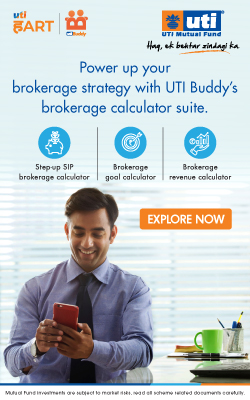A research note on ‘Referral-Generating Techniques of Top Financial Advisors’ published by US based AIG Advisor Group gives interesting insights on how advisors can improve their chances of getting referrals.
Referrals has been one of the easiest ways to acquire new clients. However, advisors would do well to keep certain dos and don’ts in mind while asking for referrals. A research note published by Advisor Group, one of the largest independent broker-dealer networks and a division of AIG Financial Distributors in a research note titled ‘Referral-Generating Techniques of Top Financial Advisors’ shares 25 proven ideas for generation referrals.
1) The best time to ask for a referral: The best time to ask for a referral is after a client has indicated: 1) appreciation for the relationship; 2) extra service you have provided; 3) gratitude for your help in reaching goals or “staying on track.” When you give clients service above and beyond what their expectations, follow up with a request for a referral.
2. Using your business card creatively: Don’t expect clients to hand out your business card to referrals. Instead, ask your client for his/her business card. In front of the client, take one of your cards and clip it to the client’s card. Say: “With your permission, I’d like to send both cards together, as a way or introducing myself to someone you know.” Write the referred person’s name on the back of your card (as a reminder). Encourage clients to write a brief introduction on the back of theirs.
3. Narrow down the referral request: The more specific you are in asking for referrals, the easier you make it for clients. For example, this is too general: “Whom do you know with the potential to become my client?” These questions are more specific: “Whom do you know that is planning on retiring in the near future? Whom do you know that just sold a home or business?”
4. Client recognition events – Tell top clients that you want to recognize them on their birthdays, anniversaries or other special occasions by arranging a lunch or dinner for them and a few good friends. Set the date and take charge of arrangements. Let clients know that it’s important to you to meet their friends who may be qualified to become clients.
5. Speaking engagements: Develop a topic on which you feel comfortable speaking. Contact civic groups in your market and offer to speak at their luncheons or meetings. Ask clients to refer you to groups in which they participate. Offer a free handout near the end of your talk to anyone who provides a business card. Ask each person why he/she is interested in the handout and write reasons given on the back of each business card.
6. Client newsletter: If you distribute a client newsletter, ask your clients if they have ever forwarded an article to someone else. Offer to send a free trial subscription to that person. On each trial issue, attach a personal note indicating “I think you will find this interesting.” After the trial issue is received, call and introduce yourself.
7. Open house: An open house is an event to which you invite clients and encourage each to bring friends and associates. Consider asking clients to invite their other professional advisors, such as accountants and attorneys. It’s a good idea to combine social mixing with financial information or education. Be sure to register each attendee and follow up after the event with “thank you notes” to all.
8. Children’s activities: If your clients’ children play sports or participate in the arts (dance, music), ask for an event schedule and arrange with the client to attend an event together. Most parents will be happy that you are showing interest. Parents with children who play on the same team, or in the same band or orchestra, often become friends. Be sure to obtain a program, if one is available, and mix with as many parents as possible. (The program will help you match participants with parents.)
9. Promote cross referrals: When you meet with business owners, professionals or self-employed clients, ask how important it is to their success to keep finding new clients and what types of new clients they want to attract. Indicate that this knowledge will help you refer qualified candidates to them — and that you would be happy for any cross-referrals. This idea works best when you initiate the first referral.
Target a Company: Select a company where one of your best clients works. Ask the client to: 1) help you learn more about the company’s benefits; and 2) identify other employees who participate in these benefits or need guidance about them — for example, executives who participate in company stock options or deferred compensation programs, or employees who are candidates for early retirement. Call these people with the client’s permission. Emphasize your familiarity with the company’s benefits and your desire to help with information and education.
11. Create a charitable “Thank You” policy: Send your top clients a personal note asking them to identify favorite charities. Explain that you need this information because you are adopting a policy of making cash donations in clients’ names each time a qualified referral is made. Explain the criteria you have set for a qualified referral, and offer the client an option of having the donations made anonymously. After each qualified referral, call the client to offer thanks and confirm the designated charity.
12. Target prospect files: Develop a list of target prospects in your community or market, the people whom you would most like to reach. Whenever a newspaper article appears mentioning a person on this list, have your assistant clip and file it. Periodically, ask your assistant to “Google search” every name on the list. The goal is to develop a profile of each prospect that identifies their affinity groups, networks and contacts. This will help you determine the best way to gain introductions to them.
13. Assumed referrals: Call a client or other potential referrer and say: “I’m planning to contact [target prospect] to introduce myself. You know this person, so I’m just checking to seek if you have any ideas about how to make it work. Would it be okay to mention your name? How would you feel about picking up the phone and mentioning me to [targeted prospect] before I make this call?”
14. A new way to use “Cold Call” lists: Suppose you acquire a list of charitable donors or condo association members. Go through the list and select anyone on it whom you know, such as a client. Then, ask for this person’s help in “walking through the list.” This can be an effective way of turning a cold call (to a list) into a warm referral.
15. Identify work connections: Research shows that about one in every five clients met their primary financial advisor through a work connection. Ask your clients to identify three people at work whom they most admire, and also three people whose jobs they would like to have. Then ask for introductions to these people “whenever the time feels right.”
16. Healers and caretakers: Think about people who heal or care for other people in continuing personal relationships. They include clergy, psychologists, counselors, social workers, chiropractors, nurses, barbers, hair stylists, manicurists, pedicurists, nutritionists and personal coaches. Although they may not qualify as clients, they can be excellent sources of referrals because they listen and care. Take the time to meet and care about them.
17. Second opinions: When you propose ideas and clients insist on a “second opinion” from another professional (e.g., CPA or attorney), consider it a referral opportunity. Tell the client that second opinions can be valuable, and you would like to introduce yourself and offer assistance to the other professional. Call the other professional and be as helpful as possible. Thank the other professional for taking the time to meet, and suggest that you work together to develop cross-referrals.
Charitable Time-Givers: People who donate their time to local charities participate in networks that are rich in referral potential. To meet such people, offer to donate some of your own time to their charities, and ask clients to help you identify a charity’s centers-of-influence (COIs). When you donate time to a charity, you become more visible and involved than when you donate just money.
19. Client advisory panel: Some financial professionals have had success in organizing a select group of clients who meet periodically offer business-building advice. Meetings can last up to two hours, and it’s a good idea to pay for breakfast or lunch. The panel should consist of 5-10 clients who care about you and your success. At each meeting, put specific prospecting and referral-generating idea on the table. Ask advisory panel members what they suggest and whom you should target.
20. Clone your top 10%: On a spreadsheet, do a detailed analysis of the top 10% of your clients. Focus on their demographics (age, occupation, income) and how they were acquired. Look for patterns that define your “Best Client Profile.” Then try to identify more people (target prospects) with the same characteristics.
21. Affinities, hobbies and charities: In your next round of client meetings, explain that you want to add profile information about affinity groups, hobbies and/or favorite charities. Ask clients to briefly describe these. Then, indicate that you would like to participate in the activities of groups or charities as a way of understanding the client better and meeting friends and associates. Ask clients if they are willing to introduce you to people at an appropriate event.
22. Client satisfaction survey: Periodically, send clients a one-page form for evaluating your services. Include an item in which clients are asked how comfortable they would be recommending your services to others. Call back clients who answer positively, thank them for completing the survey, and ask for a referral right then.
23. Negative response option: Obtain a list of key executives in companies where a top client works, or a membership list of an organization to which the client belongs. Show the client a list and ask if there is anyone on it whom you should NOT contact. After crossing those names off the list, ask clients how they would go about contacting the rest.
24. Reciprocal referrals: If you want a referral, give a referral. Go the extra step to connect people you know. Don’t just mention names. Make introductions happen and help people connect. You will be repaid with qualified referrals.
25. Give to get: Before you can get qualified referrals from a community, affinity group or network, you often must give some of your time, money or knowledge. When you are in “giving” mode, avoid selling or overt prospecting. Your generosity and commitment will be rewarded in due time by new business relationships.
Prepared verbatim based on the research note.






